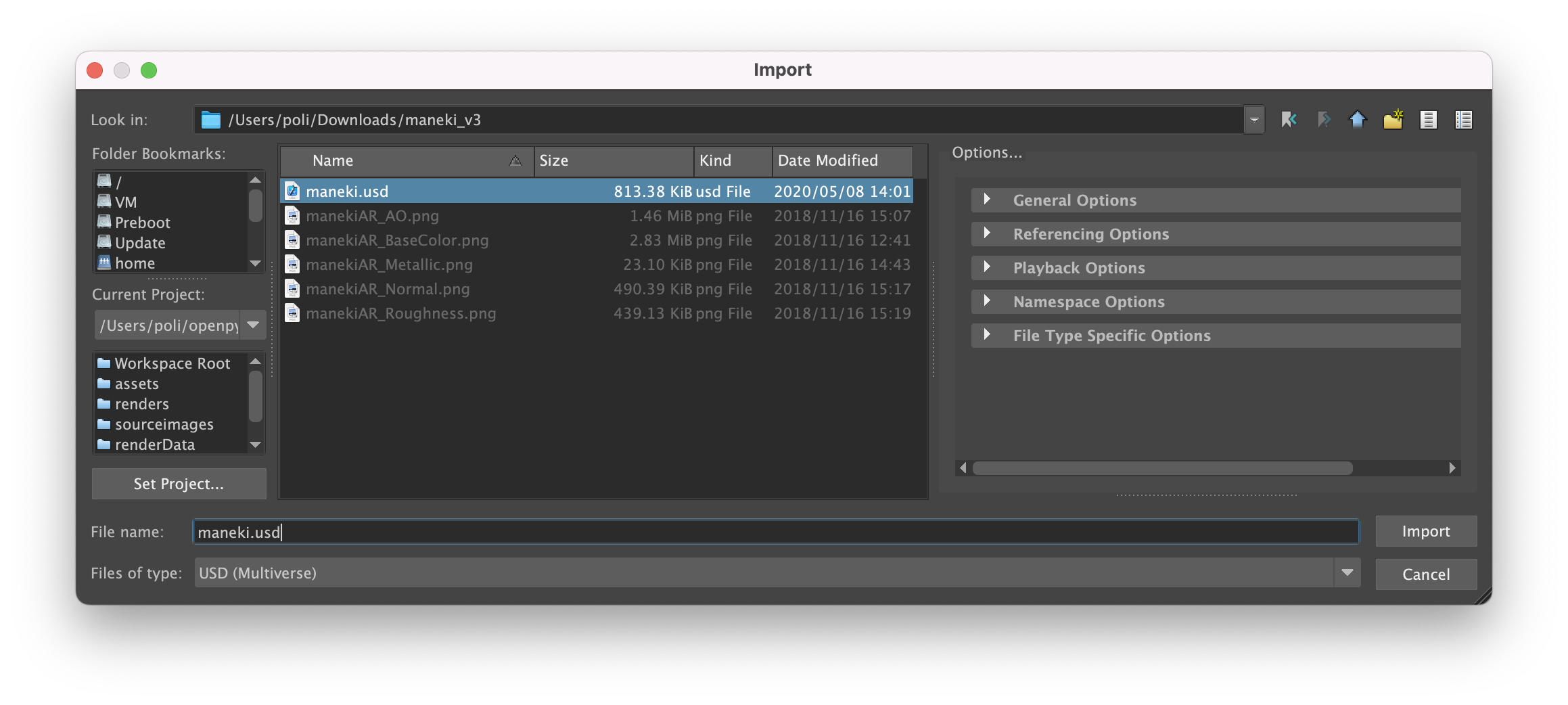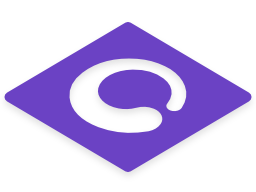# Other UI in Maya
Here you will find a summary for where to find other Multiverse-related UI in Maya.
# Plug-in Manager
# Multiverse for Maya
After correctly performing the installation, the MultiverseForMaya plug-in
will be listed in the Maya Plug-in Manager.
# Renderer-specific plug-ins
Multiverse supports multiple rendering engines:
- Support for Arnold is built-in with the
MultiverseForMayaplug-in (being Arnold part of Maya). - Support for 3Delight, Renderman and VRay is provided by individual plug-ins extensions which will be automatically loaded for the rendering plug-ins you have loaded in Maya.
- Support for Redshift is handled automatically: Redshift handles loading of the Multiverse rendering extension without the need for a dedicated Maya plug-in, hence why there is no Multiverse Redshift plug-in visible in the plug-in manager.
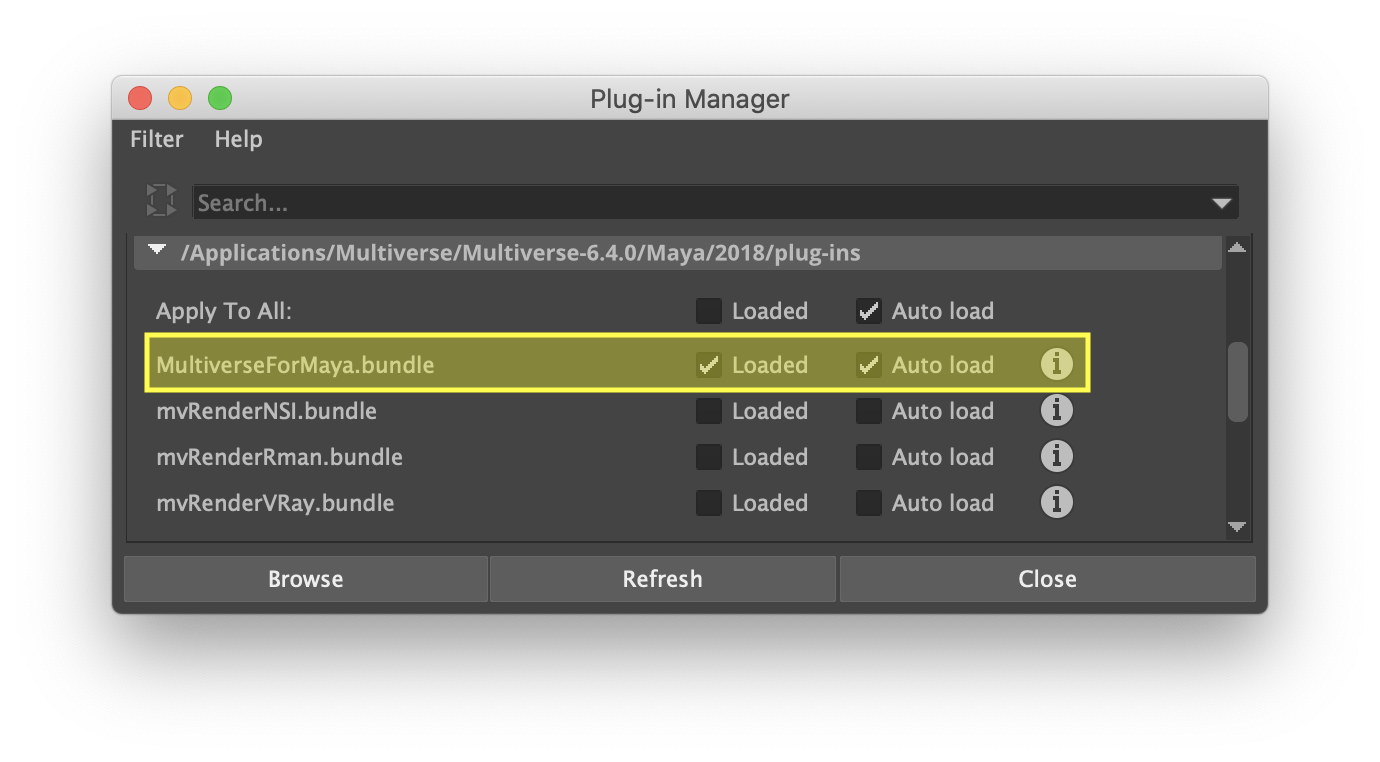
# Marking Menus

When hovering on an Multiverse Compound and performing a RMB, the Maya radial “marking menu” will appear. Multiverse extends Maya Marking Menu and offers controls for:
- hot-swap the viewport draw mode
- create a transform override on the currently selected item
- create a material override on the currently selected item
- frame the camera onto the currently selected item
- select the hierarchy ancestors for the currently selected items
# Extension Attributes to Shading Group
In the Attribute Editor of any Shading Group (Maya’s shading_engine nodes) you
will find a “Multiverse” section, containing Display Color and Display Opacity.
These are used by Multiverse when writing USD assets and, when reading, you
will see it when displaying your assets and compositions in the Multiverse
HydraVP2 viewport.

You can also use recover the display color and opacity at render time with any of the supported renderers. The display color is a USD "primvar" so you can use your renderer's primvar reader utility node to read displayColor and feed its output to the e.g. your material color:


# Extension Attributes to Maya Shapes
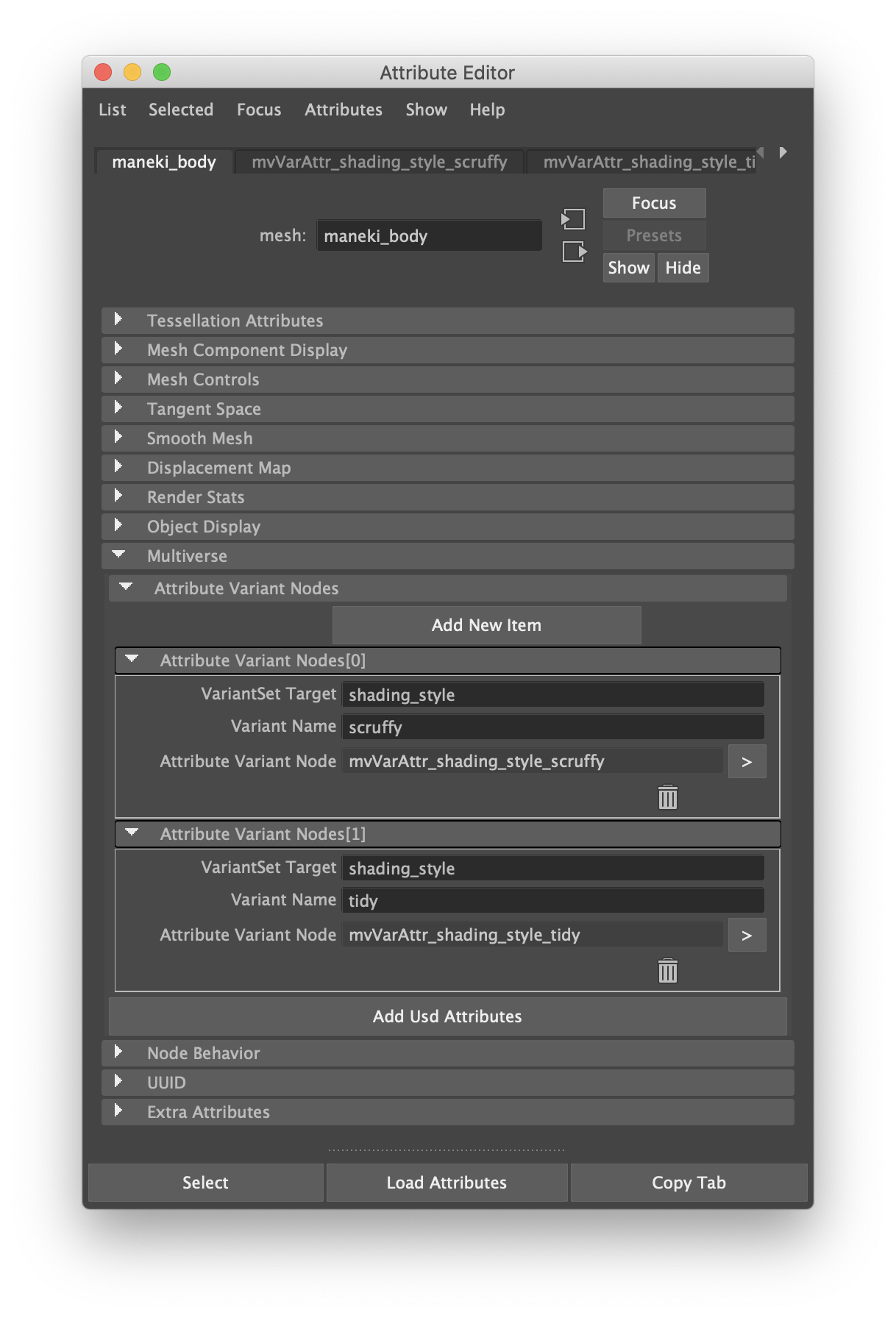
# Extension Attributes to Maya Transforms
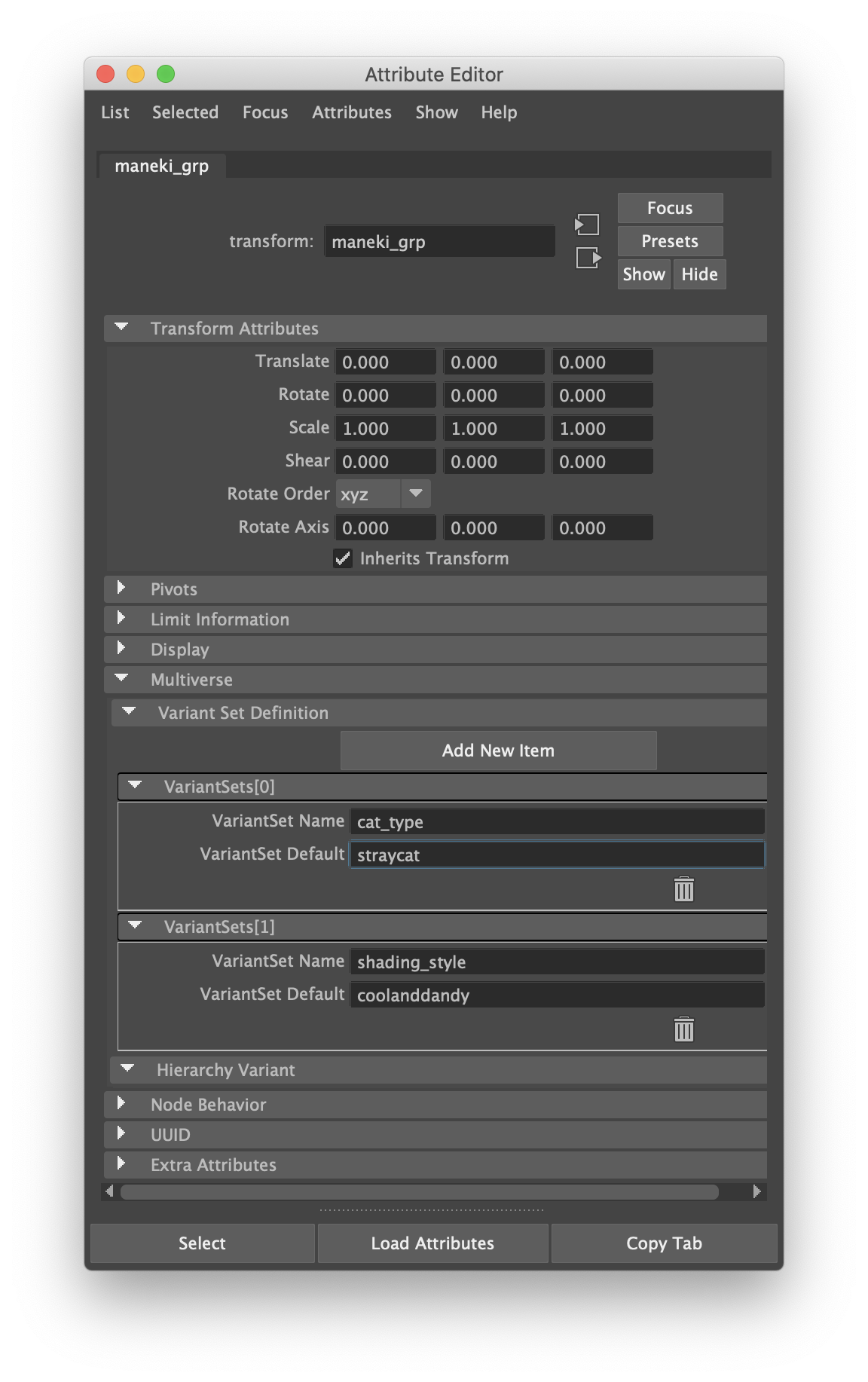
# In Hypershade
# Writing of Maya Shading Networks
From Hypershade, or relative command, it is possible to write selected shading networks to a USD file and use it as a "shader library": the USD file will contain only shading networks and no assignment information. This means you could then layer this USD file on top of a Compound with a lower USD file layer containing geometric primitives, and use MEOW to assign USD materials from your library on on the USD primitives as overrides.
This can then be achieved by selecting a number of Shading Engines (shading
groups) and invoking Hypershade: File> Export Selected Network and choose
Multiverse USD Shading Networks.
Once written you can:
interchange with another DCC: this because the shading networks are encoded using the usdShade schema and are 100% USD compliant and do not rely on other additional library layers such as MaterialX.
as per above, layer your material library to a Compound, assign some USD materials to your primitives and render in Maya with the 3Delight NSI renderer
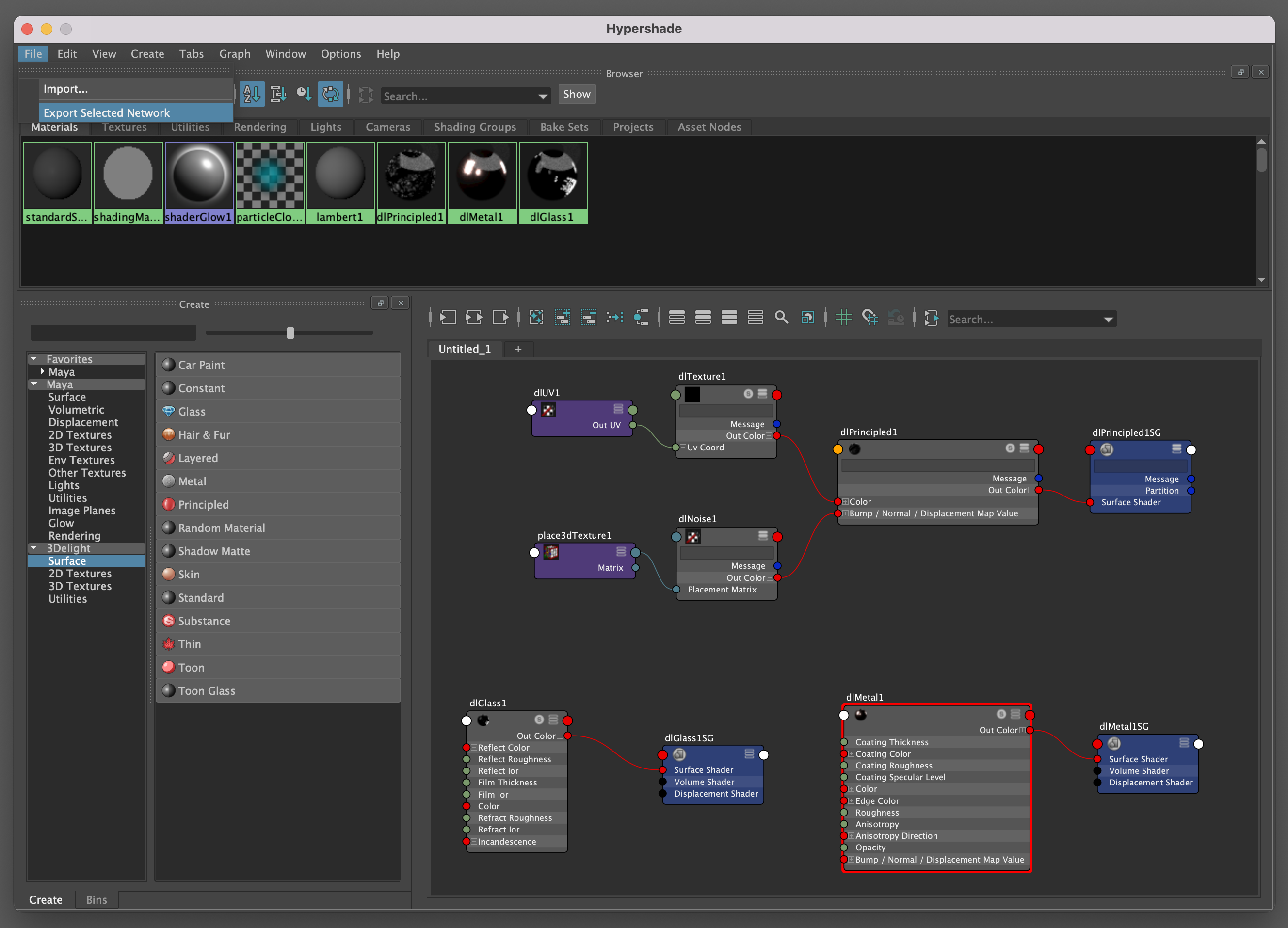
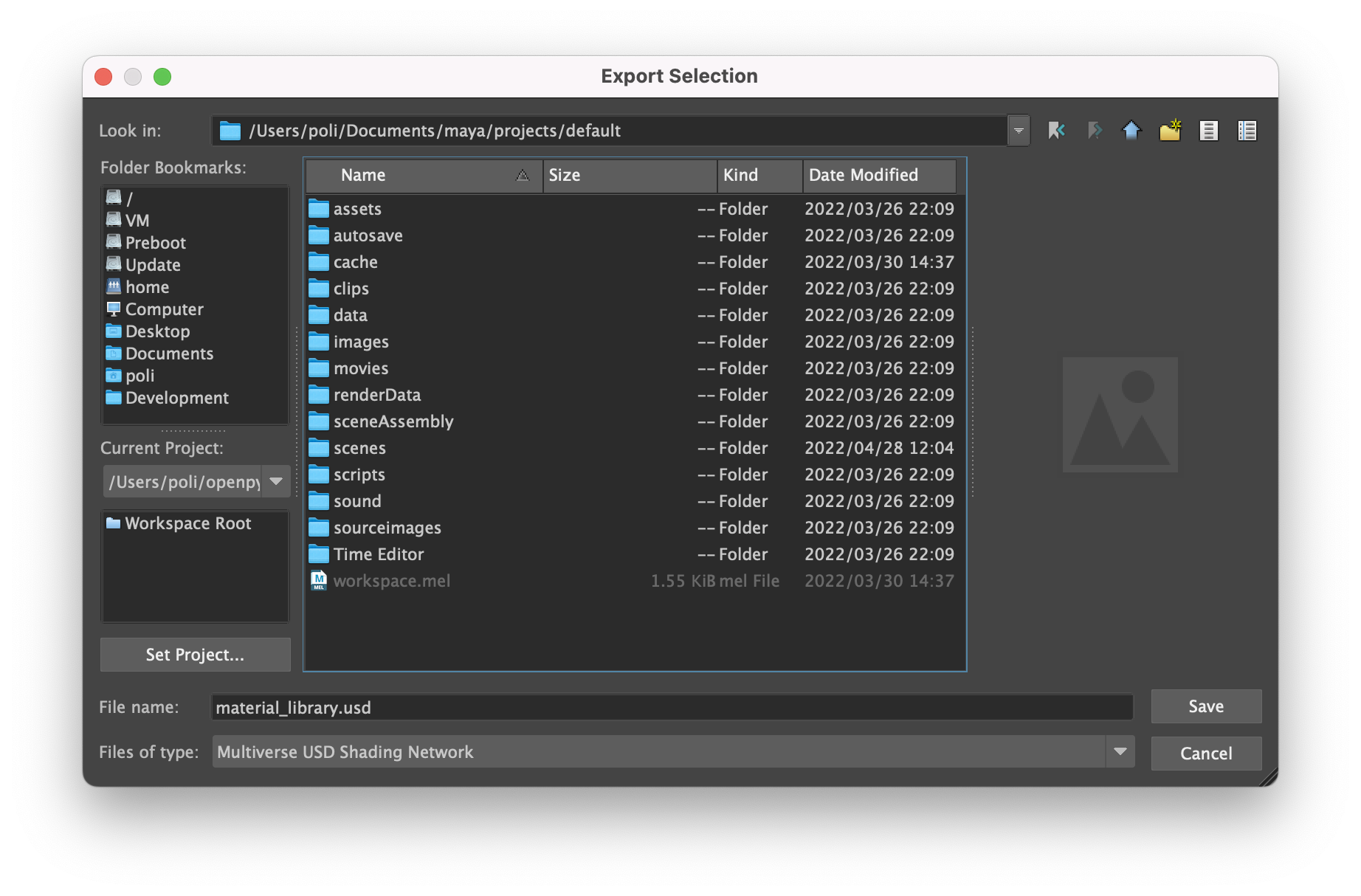
These materials are serialized using usdShade and reference the actual native
renderers' shaders (not usdPreviewSurface networks).
Note
Note that shading network writing can also be performed when writing assets, independently from the material assignment operation that can too be performed when writing assets.
# Writing of a Multiverse USDZ Material Package
This provides the ability to serialize arbitrary shading networks as "Multiverse USDZ Material Package" containing textures. These materials can encode shading networks for arbitrary renderers. In Multiverse they will render with 3Delight NSI when layered to a compound.
These materials are serialized using usdShade and reference the actual native
renderers' shaders (not usdPreviewSurface networks).
# Hierarchy Importer
As of Multiverse 7 a new option is present in "File> Import> USD (Multiverse)", this allows importing as Maya data an entire hierarchy of a Compound.
This works with Multiverse unique "live-connection", that grants "back and
forth" edits of Maya data with a procedural, node-based, live connection
provided by the mvUsdImporter node. Edits can be written back into USD via the
Multiverse Asset Writer (since the source data is Maya data) and can be
optionally written as sparse edits. All this with the auto-sync supports which
will layer the edit on top of the Compound of origin.
